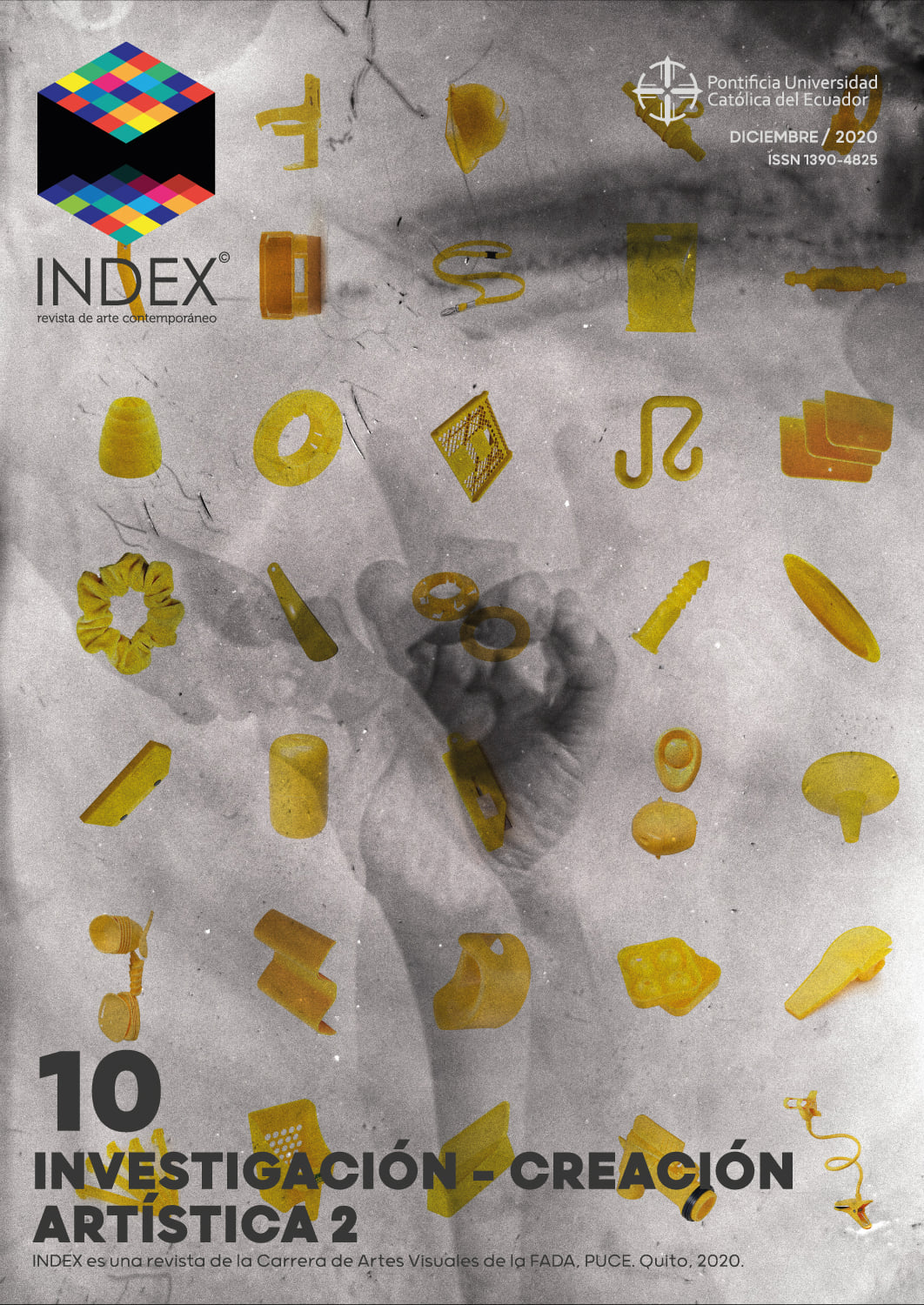‘Caminhando’ by Lygia Clark as a metaphor for the incorporation of art outside social efficiency
Main Article Content
Abstract
Lygia Clark, co-founder of the Brazilian neoconcentric movement, reconciles artistic processes and scientific processes as a vital expression that resonates beyond any assessment imposed on the Ecuadorian curriculum. Clark dialogues and expresses the possibility of a transversal and mimetic application between the individual and their education, having as a common thread all forms of artistic expression. It highlights the need for a pedagogy of the arts born from its epistemological nature, constructive processes, critical-reflective reading, and its theoretical-practical relationship. Lygia Clark allows us to glimpse a new way by rethinking the way of "evaluating" the different artistic expressions and their way of application.
Downloads
Article Details
Index, revista de arte contemporáneo maneja sus derechos bajo licencia Creative Commons Reconocimiento-NoComercial 4.0. En ese sentido los envíos quedan sujetos a la decisión del autor.
References
Abraham, T. (2011). La máquina Deleuze: Tomás Abraham y el seminario de los jueves. Editorial Sudamericana: Buenos Aires- Argentina.
Albán, F. (2014). Pasos de frontera. Trashumante: Quito- Ecuador.
Bois, Y.-A. (1999). Lygia Clark, Revista Artforum International Vol37, N5.
Bravo, M. (2005). La profesionalización de los educadores ambientales hacia el desarrollo humano sustentable. ANUIES: México
EcuRed. Constructivismo (Pedagogía). Recuperado de: https://www.ecured.cu/Constructivismo_(Pedagog%C3%ADa)
ESCO Universitas (2018). NeuroEstética: cerebro y belleza. Recuperado de: https://www.escoeuniversitas.com/neuroestetica-cerebro-y-belleza/
Freire, P. (2010). Cartas a quien pretende enseñar. Siglo veintiuno editores:Buenos Aires-Argentina, 2010
Klossowski, Pierre. 1970. Sade mi prójimo. (1970). Buenos Aires: Editorial Sudamericana.
Ministerio de Educación (2016). Recuperado de: https://educacion.gob.ec/curriculo-educacion-cultural-y-artistica/
Nuevas tendencias plásticas. (2013). Neoconcentrismo en Brasil. Recuperado de: http://ursulanuevastendencias.blogspot.com/2013/11/neoconcretismo-brasil.html
Nussbaum, M. (2015) E. duro discurso de Martha Nussbaum sobre el futuro de la educación mundial. Recuperado de: https://www.laeducacioncuantica.org/educacioncuantica/SEducacionCuantica?PN=16&PE=2&WEBLANG=1&VOLNOT=noticia6&VOLTIP=2&VOLCAT=6&VOLPAL=&VOLPAG=3&NOTICIA=85
Otero, M. y Pais Millán, P. (2016). Nóstos. Recuperado de: http://dictionaryworldliterature.org/index.php?title=N%C3%B3stos
RICHARDSON, V. (2003). Constructivist Pedagogy. Teachers College Record Volume 105, Number 9, December 2003, pp. 1623–1640 . Recuperado de: http://kodu.ut.ee/~triinm/educational_technology2/artikkel4.pdf
Rolnik, S. (2001). ¿El arte cura?. Museo de Arte Contemporáneo de Barcelona: España.
Sánchez, E. (2015) El método artístico. Recuperado de: https://www.otraspoliticas.com/educacion/el-metodo-artistico/
Stadler, M. (2015). La banda de Möbius en la obra de Lygia Clark. Recuperado de: https://mujeresconciencia.com/2015/04/04/la-banda-de-mobius-en-la-obra-de-lygia-clark/
Torres, I. (2017). Entrega del modelo educativo que estudia el Currículo nacional vigente. Recuperado de:https://www.educar.ec/jornada/postdata-modelo-educativo_signed.pdf
vv.aa., 1997, Lygia Clark (cat. exp.), Barcelona, Fundación Antoni Tàpies.

